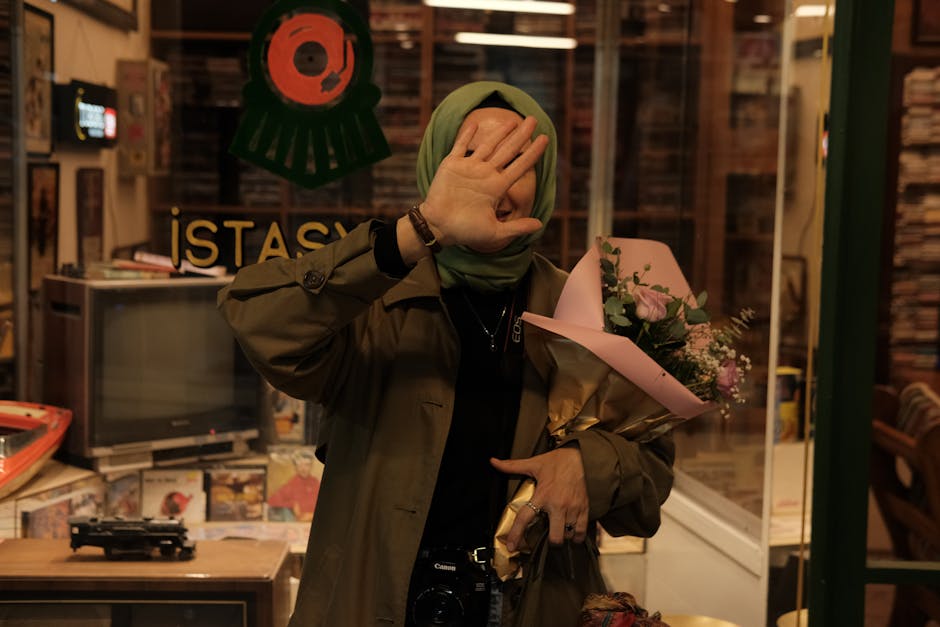The Allure of Overlooked Television

Photo by Photo By: Kaboompics.com on Pexels
Television history is filled with shows that, despite their creativity and originality, slipped through the cracks of mainstream popularity. While some series enjoy enduring fame, others quietly gather dust, waiting for curious viewers to stumble upon them. These overlooked gems often possess a unique charm, bold storytelling, or innovative formats that set them apart from the crowd. For many, discovering such a show can feel like striking gold—a secret world of entertainment that few have experienced, yet everyone who does becomes an instant advocate.
What makes a TV series a hidden gem? Sometimes, it’s a matter of timing: a show might debut before audiences are ready for its themes or style. Other times, it faces stiff competition from bigger network projects, or simply doesn’t fit the mold of what executives expect to succeed. Yet, in the age of streaming and digital archives, these forgotten series are more accessible than ever, offering a treasure trove for those willing to dig deeper into television’s rich landscape.
The appeal of these hidden gems lies in their capacity to surprise. Without the weight of hype or expectation, viewers can approach them with fresh eyes. The storytelling often feels more personal, the risks greater, and the rewards more satisfying. Whether it’s a quirky comedy, a mind-bending sci-fi, or a heartfelt drama, these shows remind us that television’s history is far more layered and diverse than the usual top-ten lists suggest.
Quirky Comedies That Deserved More

Comedy, as a genre, thrives on risk-taking and originality. Some of the most inventive sitcoms and sketch shows never found mainstream success, yet their influence can be traced in the DNA of today’s television landscape. Consider the offbeat humor of “The Kids in the Hall,” a Canadian sketch series that pushed boundaries with its absurdist sketches and gender-bending performances. Though it developed a cult following, it never reached the mass appeal of its contemporaries, yet its legacy continues to inspire comedians and writers alike.
Another standout is “Red Dwarf,” a British sci-fi comedy that combined slapstick humor with philosophical musings about existence and loneliness. Premiering in the late 1980s and thriving through the ’90s, “Red Dwarf” stood out as one of the few British science fiction comedies of its era. Despite lukewarm network support and initial skepticism from executives, its loyal fanbase and sharp writing kept it alive for years. Its blend of low-budget effects, clever dialogue, and memorable characters created a formula that has aged remarkably well, influencing a generation of sci-fi comedies that followed.
Shows like these often struggled because they didn’t fit the conventional sitcom mold. Their humor was too weird, too niche, or too ahead of its time for broad audiences. Yet, as streaming platforms and social media have allowed for greater word-of-mouth discovery, many of these comedies are enjoying a renaissance. They stand as proof that television’s true innovators are sometimes found on the fringes, waiting for the right audience to appreciate their brilliance.
Short-Lived Wonders: Series Gone Too Soon

Photo by Photo By: Kaboompics.com on Pexels
Some TV shows burn bright and fast, leaving an indelible mark despite brief runs. These short-lived wonders often become cult classics, cherished by devoted fans who lament their premature cancellation. “Freaks and Geeks” is a prime example—a coming-of-age dramedy that lasted only one season but launched the careers of numerous Hollywood stars and earned critical acclaim for its authentic portrayal of teenage life. Its blend of humor, heart, and awkward realism struck a chord with viewers, but it struggled to find a large enough audience during its original run.
Similarly, “Eerie, Indiana” offered a unique twist on the supernatural mystery genre. Airing for just one season in the early ’90s, it followed a young protagonist navigating the bizarre happenings in his small town. The show’s “mystery of the week” format was both accessible and inventive, allowing for a variety of strange and memorable stories. Though it disappeared quickly from the airwaves, “Eerie, Indiana” gained a devoted following in syndication and remains a beloved oddity among fans of quirky, imaginative TV.
These series often faced challenges beyond their control—unfavorable time slots, network shakeups, or simply being ahead of their time. Yet, their brevity is part of their appeal. With only a handful of episodes, they offer a concise, tightly crafted viewing experience. For those willing to seek them out, these short-lived wonders provide a perfect example of quality over quantity in storytelling.
Animated Oddities: Cartoons for All Ages

Photo by Jesus Vidal on Pexels
Animation has long been a playground for creative experimentation, and some of the most inventive series flew under the radar during their original runs. “Doug,” for instance, captured the everyday anxieties and triumphs of adolescence through the eyes of its imaginative protagonist. While it resonated with a generation of young viewers, its gentle humor and relatable storytelling make it a worthwhile watch for adults revisiting their childhood or discovering it for the first time.
Beyond “Doug,” the ’90s and early 2000s saw a surge of animated shows that blended humor, satire, and surrealism. Many were overshadowed by bigger franchises or dismissed as children’s fare, yet their sophisticated writing and visual inventiveness have earned them cult status in retrospect. These series often tackled complex themes—identity, friendship, social pressure—in ways that were accessible yet profound, proving that animation can be as emotionally resonant and intellectually stimulating as any live-action drama.
Rediscovering these animated oddities is a reminder of the medium’s versatility. Whether it’s the absurd adventures of unlikely heroes or the quiet introspection of a shy adolescent, these shows offer something for everyone. Their enduring appeal lies in their ability to speak to universal experiences, wrapped in colorful, imaginative packages that transcend age and time.
Genre-Bending Experiments

Photo by Alena Darmel on Pexels
Some of television’s most intriguing hidden gems are those that defy easy categorization. These genre-bending experiments blend elements of comedy, drama, science fiction, and horror, creating a viewing experience that’s both unpredictable and exhilarating. “Twin Peaks,” for example, merged small-town mystery with surrealist imagery and offbeat humor, captivating audiences with its dreamlike atmosphere and enigmatic storytelling. While it eventually became a cult phenomenon, its initial run was marked by confusion and divided opinions, leaving it as a polarizing but unforgettable piece of TV history.
Other series, like “Babylon 5,” pushed the boundaries of serialized storytelling in science fiction. Its ambitious narrative arcs and complex character development set it apart from more episodic contemporaries, earning it a dedicated fanbase even as it struggled for mainstream recognition. These shows often took risks with structure, tone, and subject matter, challenging viewers to engage with television in new and unexpected ways.
The legacy of these genre-benders is evident in today’s prestige television landscape, where hybrid genres and unconventional narratives are celebrated. Their influence can be seen in everything from modern sci-fi epics to quirky indie comedies. For viewers seeking something different, these experiments offer a refreshing alternative to formulaic TV, proving that the medium is at its best when it dares to break the rules.
The Enduring Power of Cult Followings

Photo by HIGHER VIBRATION on Pexels
What allows a hidden gem to endure long after its initial run? The answer lies in the passion of its fans. Cult followings have the power to resurrect forgotten shows, keeping their memory alive through fan sites, conventions, and social media campaigns. These communities create a sense of belonging, uniting viewers who share a love for the unconventional and the overlooked.
Shows like “Buffy the Vampire Slayer” and “Mystery Science Theater 3000” exemplify the power of cult fandom. While both eventually achieved wider recognition, their early success was built on grassroots enthusiasm and word-of-mouth recommendations. Fans organized viewing parties, created fan fiction, and lobbied for revivals, demonstrating that audience engagement can be just as important as ratings or critical acclaim.
In the digital age, it’s easier than ever for hidden gems to find new audiences. Streaming platforms, online forums, and social media have democratized television discovery, allowing viewers to share recommendations and celebrate their favorite shows. As a result, series once relegated to obscurity are being rediscovered and reappraised, their influence growing with each new generation of fans.
Rediscovering Hidden Gems: Where to Start

Photo by fotografoedsonj ed on Pexels
For those eager to dive into television’s treasure trove of hidden gems, the journey begins with curiosity. Start by exploring lists of underrated or cult-favorite series, paying attention to shows that never made the primetime spotlight. Seek out recommendations from passionate fans, and don’t be afraid to venture outside your comfort zone—some of the most rewarding discoveries come from unexpected places.
Consider revisiting the overlooked comedies, short-lived wonders, and animated oddities discussed here. Many are now available on streaming services or digital platforms, making them more accessible than ever. Approach each show with an open mind, appreciating the risks and creativity that set them apart from mainstream fare. Remember, the joy of discovery lies not just in finding something new, but in sharing it with others who will appreciate it just as much as you do.
Ultimately, the world of hidden TV gems is a testament to the richness and diversity of the medium. These series may not have enjoyed blockbuster success, but their impact is undeniable. They remind us that great storytelling can be found in the most unexpected places—and that sometimes, the best shows are the ones waiting quietly to be found.
Sources
- https://www.imdb.com/list/ls058863262/
- https://www.looper.com/1497767/90s-tv-shows-cult-classics/
- https://www.timeout.com/film/best-90s-tv-shows
- https://www.marieclaire.com/culture/underrated-90s-tv-shows/
- https://www.youtube.com/watch?v=uH8NW3n_sls





